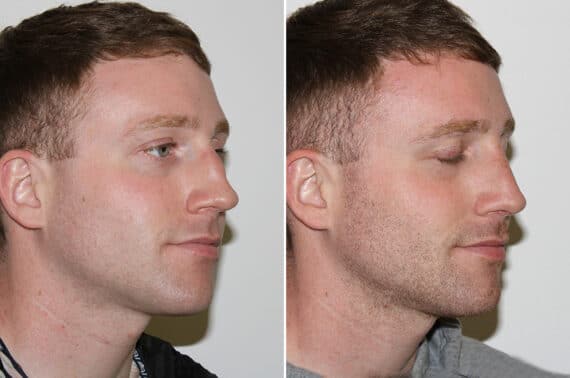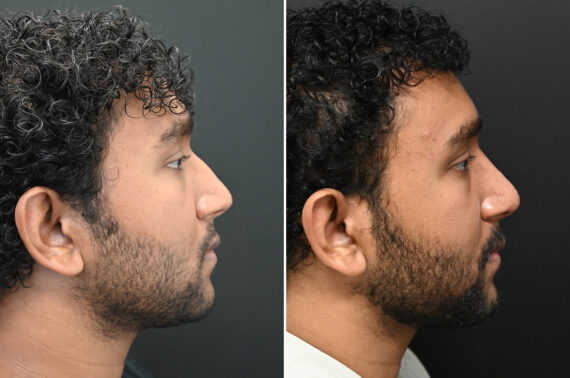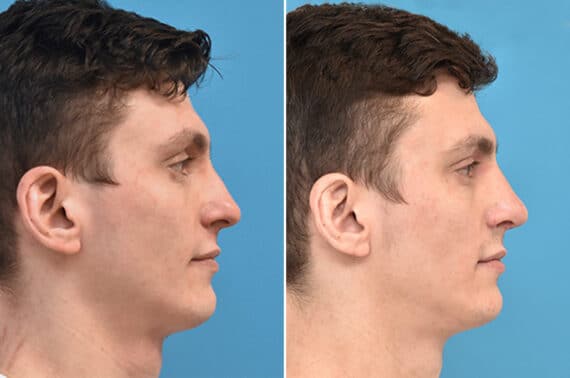Rhinoplasty—commonly referred to as a “nose job”—is one of the most popular facial plastic surgery procedures in the United States. While many people seek this procedure for cosmetic reasons, others need it to correct breathing issues, fix structural damage, or address congenital defects. If you’re wondering, “is rhinoplasty covered by insurance?” you’re not alone. The answer isn’t always straightforward, but the good news is that in some cases, insurance may help cover part—or even all—of your procedure.
At Becker Plastic Surgery, we help patients in New Jersey navigate both the medical and insurance aspects of rhinoplasty. Understanding whether your nose job qualifies for insurance coverage starts with knowing the difference between cosmetic rhinoplasty and functional rhinoplasty, and getting the right documentation from a qualified surgeon. This guide breaks it all down, so you can take the next step toward breathing better, feeling better, and looking your best.

What to Know About Insurance and Rhinoplasty
- Insurance may cover rhinoplasty when it’s done to fix breathing problems or structural issues—not just for cosmetic changes.
- Common conditions that may qualify include a deviated septum, nasal trauma, and chronic sinus problems.
- You’ll need a consultation with a facial plastic surgeon, along with imaging and an official diagnosis, for insurance to consider coverage.
- Cosmetic rhinoplasty alone is usually not covered, but it can sometimes be combined with functional surgery.
- Dr. Becker and his expert team can help guide you through the insurance process and determine if your case qualifies.
Differences Between Cosmetic and Functional Rhinoplasty
Cosmetic rhinoplasty focuses on enhancing the appearance of the nose. This might mean reshaping the bridge, tip, or nostrils to create better facial balance. Since cosmetic procedures are considered elective, they’re not typically eligible for insurance coverage.
Functional rhinoplasty, on the other hand, is performed to improve nasal function. This includes fixing structural issues that cause difficulty breathing, chronic congestion, or other health problems. When rhinoplasty is done to restore proper nasal airflow or repair damage caused by trauma, insurance providers may consider it medically necessary and offer coverage.
Rhinoplasty Patient Results
* All patients are unique and individual results may vary.
Insurance Coverage for Functional Rhinoplasty
If your rhinoplasty is being performed for medical reasons, there’s a good chance it could be covered by your insurance plan. However, you’ll need to meet specific criteria—and your surgeon must provide documentation proving the medical necessity of your procedure. Below are some of the most common conditions that may qualify.

Problems Due to a Deviated Septum
A deviated septum is one of the leading reasons people seek functional rhinoplasty. When the thin wall separating your nostrils is off-center, it can block airflow and lead to chronic breathing problems. Septoplasty, often performed in combination with rhinoplasty, can correct the issue. When symptoms like difficulty breathing, chronic congestion, or sleep disturbances are documented, insurance providers often offer coverage for this procedure.
Nasal Obstruction from Trauma or Injury
Injuries from sports, car accidents, or falls can cause nasal bones to break or shift, leading to long-term obstruction and aesthetic changes. If you’re dealing with nasal obstruction due to trauma—especially if it’s affecting your breathing—your procedure may be considered reconstructive and covered by insurance.
Sleep Apnea or Difficulty Sleeping
Some patients develop obstructive sleep apnea due to structural issues in the nasal passages. If your breathing problems contribute to poor sleep or daytime fatigue, and medical imaging supports a diagnosis, functional rhinoplasty could be recommended. When tied to a documented sleep disorder, insurance plans may approve coverage.
Sinus Issues
Chronic sinus infections or sinusitis that don’t improve with medication may be linked to anatomical blockages inside the nose. Functional nasal surgery can improve sinus drainage and reduce infections. If you have a history of sinus issues that have not responded to conservative treatment, you may qualify for insurance-covered rhinoplasty.
Enlarged Turbinates
Turbinates are structures inside the nose that help regulate airflow and humidity. When they become enlarged—often due to allergies or inflammation—they can block breathing. Turbinate reduction surgery, sometimes performed alongside rhinoplasty, may be covered if symptoms are severe and persistent.
Nasal Valve Collapse
The nasal valve is a narrow part of the nasal airway. When this area collapses—whether due to age, prior surgery, or trauma—it can cause significant airflow problems. Correcting nasal valve collapse often requires reconstructive rhinoplasty, which can qualify for insurance coverage when documented properly.
Congenital Defects or Birth Abnormalities
Some individuals are born with nasal deformities that affect breathing or appearance. Rhinoplasty to correct these issues is often considered medically necessary, especially when tied to functional impairments. Insurance coverage may apply depending on the specific diagnosis.
Don’t let your symptoms get worse
Get your diagnosis now and start breathing easier sooner with our experts help.
Insurance Requirements for Rhinoplasty Coverage
If you want your rhinoplasty to be covered, you’ll need to follow a few key steps to demonstrate medical necessity. While it’s important to check with your individual carrier, here’s what most insurance companies look for:
- Evaluation by a facial plastic surgeon: This is your first and most important step. The surgeon will assess your nasal structure, document symptoms, and determine if you’re a candidate for functional rhinoplasty.
- Imaging such as CT scans or nasal endoscopy: These tests show internal nasal anatomy and help support a diagnosis. Imaging is often required by insurance companies before they’ll approve a claim.
- Formal diagnosis: This might include a deviated septum, nasal valve collapse, or other structural conditions affecting function. Without a diagnosis, insurance companies typically deny coverage.

Documentation is everything. Dr. Becker and his team are highly experienced in providing the detailed clinical notes and imaging reports that insurance companies require.
Is Cosmetic Rhinoplasty Ever Covered to Improve Appearance?
While cosmetic rhinoplasty is generally not covered by insurance, there are some exceptions. If you are already undergoing functional nasal surgery and want to make cosmetic changes at the same time, you may only be responsible for the cosmetic portion of the procedure. This combined approach allows patients to address both medical and aesthetic concerns in one surgery—often reducing the overall rhinoplasty cost.
Why Patients Choose the Surgeons at Becker Plastic Surgery
Becker Plastic Surgery is a trusted destination for rhinoplasty in New Jersey, known for its team of expert, board-certified facial plastic surgeons. Dr. Daniel G. Becker, Dr. Nicole Schrader, Dr. Kirk Lozada, Dr. Alisa Yamasaki, Dr. Joanna Kam, and Dr. Anni Wong each bring specialized training and extensive experience in both cosmetic and functional rhinoplasty. Together, they offer patients a comprehensive approach to improving both nasal appearance and function.
Whether you’re seeking relief from breathing problems or interested in combining cosmetic refinements with medically necessary surgery, the Becker team is committed to personalized care. From your initial consultation through insurance documentation and recovery, they’ll guide you every step of the way—ensuring that your rhinoplasty experience is smooth, informed, and tailored to your needs.
Find Out if Insurance Will Cover Your Rhinoplasty Cost: Schedule a Consultation in Philadelphia or New Jersey Today
If you’re still asking yourself, “how to get a nose job covered by insurance?” the best way to start is with a consultation. The team at Becker Plastic Surgery can evaluate your concerns, provide imaging if necessary, and submit the appropriate paperwork to your insurance provider.
You don’t have to navigate this process alone. Whether you’re struggling with breathing issues or considering a combined cosmetic and functional approach, Becker Plastic Surgery is here to help.
Schedule your consultation today to learn more about your coverage options—and take the next step toward breathing easier and looking your best.


